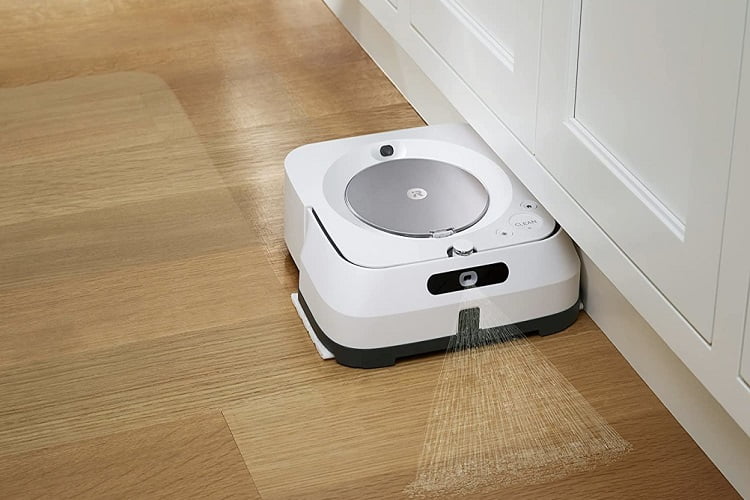 First came the robotic lawnmower that could be programmed to cut your grass on schedule. That nifty little invention was followed by the robotic vacuum that wanders around the house sucking up everything from cat hair to the pieces of cereal Junior dropped on the floor. Now we have the robotic mop. It will ostensibly keep your floors clean with no effort required from you.
First came the robotic lawnmower that could be programmed to cut your grass on schedule. That nifty little invention was followed by the robotic vacuum that wanders around the house sucking up everything from cat hair to the pieces of cereal Junior dropped on the floor. Now we have the robotic mop. It will ostensibly keep your floors clean with no effort required from you.
The robotic mop is certainly an interesting invention. In terms of its practicality, it is barely suitable for the average American home. It certainly would never do in a commercial environment. As such, robotic mops are likely to be a niche product that enjoys a brief fad market before fading away.
This isn’t to say that the inventors of the robotic mop don’t know what they are doing. They are actually brilliant in their own rite. It is just that robot mops are not practical or functional when you truly understand the proper way to mop a floor. A robot just cannot do the job with the same effectiveness.
Table of Contents
Water, Pressure, and Time
The three key elements to effectively mopping are water, pressure, and time. To illustrate the concept, let us use the example of a pizza shop. This is a fitting example due to all the punishment kitchen floors take. Mopping a pizza kitchen floor at the end of the day is a job all unto itself.
Effective mopping starts with sweeping. The kitchen floor must be clear of all loose dirt and debris before mopping ever begins. With that out of the way, the next step is to wet the floor down with a solution of hot water and detergent. This is the step most often missed by people who do not know how to mop properly.
After wetting the floor, the person mopping should wait a minute or two to allow the water and detergent to do their thing. Then the mopper rinses the mop and rings out all the water. With a damp mop, he or she then goes over the floor to soak up all the water and dirt. He/she applies a bit of pressure to loosen any dirt or debris that remains.
The concept of wet mopping is to use a string mop as both an applicator and absorber. The wet mop applies the hot, soapy water that does the actual cleaning. The rinsed, damp mop then absorbs the water and dirt. According to Alsco, a Utah supplier of commercial floorcare and cleaning products, a string mop used according to these time-tested principles can get just about any commercial kitchen floor clean.
The Robotic Mop Doesn’t Hold Up
With an understanding of how to properly mop a floor, why the robotic mop doesn’t hold up should be apparent. First and foremost, a robotic mop cannot possibly hold enough water to be effective without being so big as to be cumbersome. Without enough water, it doesn’t take long for the robot’s soaking mechanism to be putting just as much dirt on the floor as it’s picking up.
Next, pressure is something the robotic mop doesn’t apply well. It may have built-in brushes to help loosen dirt, but it is incapable of applying the kind of pressure necessary to release embedded dirt and stains.
The robot mop is a great idea in principle. Practically speaking though, nothing substitutes for a good, old-fashioned string mop and ringer. It is highly unlikely that the robotic mop will ever see the light of day as a viable commercial product. It is destined to remain a novelty product for middle- and upper-class homes.




